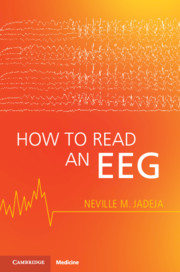Part I - Basics
Published online by Cambridge University Press: 24 June 2021
Summary
Electroencephalograms (EEGs) are ubiquitous in clinical neurology. They are used to evaluate transient neurological symptoms such as impaired awareness, altered sensations, or abnormal movements. They form a part of the evaluation of common neurological illness such as epilepsy, stroke, tumors, dementia, encephalopathy, and encephalitis. Their role in critical care medicine is increasingly being recognized. Neuroscience trainees can be sure to encounter them in the office, emergency room, at the bedside, and during various certification examinations. However, the level of comfort among trainees to confidently interpret EEGs is variable. At first most trainees will be intimidated by their appearance and instinctively limit themselves to reading their reports. Misinterpretations of electrographic waveforms are also common resulting in needless suffering from misdiagnoses and medication misuse [1]. The best way to avoid these situations is to interpret the EEG yourself and understand its implications. Simply put, this book empowers you to do just that!
- Type
- Chapter
- Information
- How to Read an EEG , pp. 1 - 60Publisher: Cambridge University PressPrint publication year: 2021

